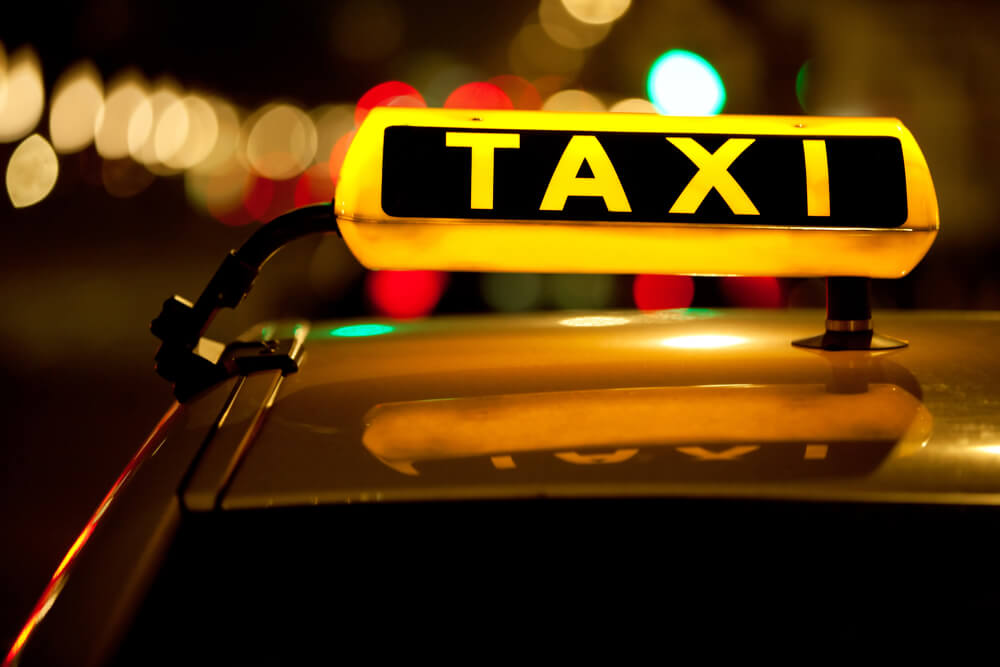Everything will be Uber: the company supplants public transport in cities
Resource reporter The Verge Spencer Woodman visited the city of Altamonte Springs in Florida and wrote a report on how the taxi service Uber - city by city - it is winning back the country from public transport. The text is presented in translation and with abbreviations.
The city manager of Altamonte, Frank Marz, for almost 20 has fought for years in implementing a transport system in the city consisting of buses on demand. His plan was called FlexBus: with the help of a special program, residents could “call” buses through interactive terminals and even with their own computers. The implementation of this plan was to turn Altamonte, a few miles from Orlando, into a prosperous and pedestrian-friendly city.
Bureaucracy and disagreement with the regional transport authority stopped the project for many years. Last October, the Federal Passenger Transportation Authority withdrew millions from financing. FlexBus is dead.
A couple of weeks later, Marz called Uber to find out if the company wanted to make the world's first public transport system based on ridesharing technology (common use of vehicles) in Altamonte.
At that time, Uber and a similar company, Lyft, had already begun to cooperate with urban carriers in San Francisco, Atlanta, Philadelphia, Dallas, Cincinnati and other cities. These companies are being squeezed into highly specialized transportation services - for example, the transportation of disabled people and low-income citizens. In the city of Washington, they were even offered to take on the transport function for some of the 911 challenges.
The time for such changes is quite appropriate: many cities are struggling for budgets for their transport, not to mention the expansion of the urban transportation system. Last year, Uber and Lyft received more than one offer of contracts for public transportation from state officials. Such cooperation may lead to the fact that public transport will be replaced by private carriers, called on a smartphone.
There are disadvantages to such services: the use of private companies can undermine civilian ideas of the availability and transparency of public services. The first signs of this are visible in Altamont: the pilot program cannot be used by people who do not have smartphones and credit cards.
Uber sees itself as an addition to existing transport systems, rather than replacing them. However, Travis Kalanik, CEO of the company, believes that they have a future in which the use of Uber will be cheaper than regular transport, not to mention his own car: this can be achieved if drivers pick up the next passenger where the previous one goes. The development of such a “permanent trip” technology is included in the company's plans for the coming years.
“We realized this before others: public transport is not infrastructure. It’s about convenience and control,” says Martz.
With the use of public funds, such a transport future can happen even earlier. The Uber project in Altamont will receive up to 25% of funding from the government, its predicted growth is 100% per year. The pilot year will cost the city $ 100 000 - much cheaper than the new transport system. The project in the city announced 4 March 2016 of the year.
The reaction surprised everyone: in the first weeks after launch, the number of Uber users in Altamont increased 10 times. Marzu started calling from other cities to find out the details of the experiment. Already in July, similar projects were approved in 4 cities near Orlando - the Uber-based public transportation system began to grow, including outside Florida. Marzu was called by transport workers from Los Angeles, Boulder and even Boston to find out about the collaboration with Uber.
In Altamonte, the program works quite efficiently: the 2-mile trip to the mayor's office cost $ 4 — $ 2 is more expensive than the bus, but much faster. However, this is not available to everyone. Passengers without smartphones and credit cards, as well as disabled people cannot use it - unlike a taxi, Uber is not obliged to provide services to people with disabilities who find it easier to get on a bus than get into a car.
Those who support public transport believe that there are a lot of such people. Public transport is therefore public, they say, that it works for everyone - people with disabilities, people without bank accounts and smartphones, and Uber should also strive for this, since the company suppresses this service. However, in the contract between the city authorities Altamonte and Uber there is not a word about this.

Photo: depositphotos.com
Local taxi companies are also outraged. "It turns out the city has decided to allocate money to transport healthy young people driving for beer and wings," says Roger Chapin, vice president of Orlando-based taxi company Mears Transportation. He read about the Uber contract in the local newspaper.
Uber recognizes that its services are not sufficiently accessible, and says it is experimenting with vehicles for people with disabilities. In one of Florida’s counties, they are also testing services for the poor, which can be accessed without a smartphone.
Martz confirms that not everyone can use Uber in Altamont, but says city buses continue to serve those people, and there is also a Lynx transit system that serves people with disabilities. “Instead of forcing people to use new technology or infrastructure, we simply provided an additional choice. Users will choose what is best for them,” says Martz.
The second point in cooperation with Uber, which caused suspicion among the city governor of the Martz and transport system experts, is non-disclosure agreements. The first such agreement was received by Marz in January of this year - it was quite extensive, and it required Altamonte to keep “all the technical and business information about Uber” secret, otherwise the city would be threatened with a lawsuit and damages.
But for a program financed by taxpayer money, this is a violation of both the spirit of transparency and the law. Marz refused to sign the agreement in this form and soon received another. It contained a posting that in the event of receiving a request for disclosure of documents regarding Uber under the Public Information Act, the city "agrees to immediately notify Uber of such a request and not to disclose information immediately."

Photo: depositphotos.com
Requirements to keep data secret conflict with government transparency regulations. In other cities, Boston and San Francisco, the company persuaded authorities to allow ridership data to be hidden, even from city transit departments.
This is the exact opposite of the practice of public transport companies, for whom data openness is the standard. Statistics on passenger traffic provides an opportunity to see how the system works: whether the whole community has access, where there is a need for more transport, and so on.
Uber explains its policy of hiding data by high competition in the market. Previously, taxi companies were monopolists in the market, so there was no point in concealing traffic statistics. Now the high competition forces to refuse transparency, they say in the company. In Altamont, Uber’s passenger traffic data is closed to citizens, but Martz and several other city officials can view them.
In general, Uber’s requirements for confidentiality are so high that the authorities are not allowed to disclose even the names of the planned general initiatives before they are launched - under the threat of disrupting the entire project.
In addition to Altamonte, Uber collaborates with other areas of Florida. For example, in the Pinellas district, there is one of the earliest joint projects of Uber and public transport. Here, Uber carries passengers to and from bus stops at a discount - the difference covers the city budget.
The service works well, but is not in demand. As well as the additional Uber service in Altamont for the transport of passengers to and from railway stations with a discount of 25%. According to Marz, most of the budget money for Uber services is covered by intercity transfers.
Uber itself makes a big bet on the supply of passengers to and from public transport stops. This feature fully meets the company's mission - to transport more people in fewer cars. To do this, they do not have to cooperate with the city authorities - in some cities where there are no programs with Uber, passengers already use the services of the company to get to or from the train or bus station.
The program of the type working in Altamont is launched in the near future in Dublin, the Gulf region. The fare will cost about $ 5 (the difference is funded by the state), and this will allow the city transport administration to rent low-cost flights.
Without waiting for funding, Uber itself is offering programs that could eventually replace public transportation in many cities. In February, the UberHOP program began operating in Seattle - the fare is only $1, much cheaper than buses. In May, the company announced it would expand its UberPool service in Washington, D.C., where public transportation has been dying out. And in New York, Uber offered summer “passes”—$79 a month for unlimited rides during morning and evening rush hours.
Thus, Uber becomes a mode of transport, at least for a certain segment of the population, starting the era of a new type of cooperation between private companies and the state in the field of transportation. And although Uber’s urban metro systems cannot be replaced, most Americans live in areas more similar to Altamonte than to Manhattan. It is there that most changes in the work of transport are expected, they say in Uber and Lyft.
Despite problems with transparency and access, the first results of the experiment in Altamont showed a high interest of the state. Next year, exactly the same services will work in the neighboring cities of 5.
Martz, who had been nurturing the idea of FlexBus for so many years, was absolutely not surprised by the success of the project with Uber. "They brought a good solution to the market, so the choice was obvious."
Read also on ForumDaily:
Uber officially launched a taxi without a driver
How Uber became a phenomenon in the global economy and politics
Tesla autopilot saved the driver's life by bringing him to the hospital
In the US, investigating the tragic accident involving the autopilot Tesla
Two Americans skipped $ 10 million, collected on Uber and Airbnb
Subscribe to ForumDaily on Google NewsDo you want more important and interesting news about life in the USA and immigration to America? — support us donate! Also subscribe to our page Facebook. Select the “Priority in display” option and read us first. Also, don't forget to subscribe to our РєР ° РЅР ° Р »РІ Telegram and Instagram- there is a lot of interesting things there. And join thousands of readers ForumDaily New York — there you will find a lot of interesting and positive information about life in the metropolis.











